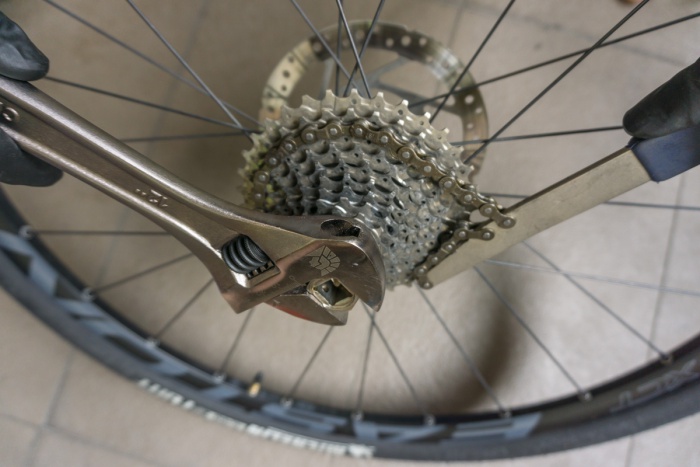There’s always been controversy and confusion about the difference between a freewheel and a cassette. It’s because the two terms are often used interchangeably, causing cyclists to waste time and effort when attempting to order parts or perform work on the bike. Knowing the difference from a freewheel vs freehub or cassette is also knowledge you should know if you’re into older bikes.
 Freewheel vs Freehub – Thread Differences
Freewheel vs Freehub – Thread Differences
One of the main difference is that freewheels typically have a threaded hub. Bikes equipped with cassettes do not have a threaded hub, but instead, slip onto the hub with splines. But the differences, without getting too technical — go deeper than that.
The Freehub
Around 1980, the cassette replaced the conventional threaded rear hub. Not to be too confusing, but cassettes run what is referred to as a freehub. This newer style hub works so well that they have replaced the traditional freewheel and have become the new standard for contemporary road bikes. One of the major differences between a freewheel and a freehub is the location of the coasting mechanism.
Inside a Freewheel
On a freewheel, the coasting mechanism is built into the gears or cogset. “Freewheel” refers to the gear cluster as a whole, with the coasting mechanism inside.
Inside a Freehub
On a freehub, the coasting mechanism is part of the wheel’s hub. The gear cluster is a unit with non-moving parts, and is referred to as a cassette. The cassette slides into place onto the freehub body and is held in position by a series of ridges, or splines, and locked in place using a cassette lockring.
Installing a Freewheel
Installing a freewheel is simple, because you don’t need any tools. Just use your fingers to screw the freewheel on the hub, as if you were screwing on any type of lid. The tightening happens when you ride the bike up a short hill. You can feel the freewheel slip forward slightly as it tightens. A strong rider pushing a freewheel mile after mile can tighten threads to such a high degree that the freewheel can be difficult to remove.
Tandem Bikes
If freewheels are used on a tandem bike, the combined power of two riders makes freewheels extremely tight. This is where grease is so important when installing a freewheel on any bike. Always apply it to prevent the freewheel from over-tightening to such an extent that you can’t get it off eventually.
Freewheel Gears
The majority of older freewheels have replaceable, interchangeable sprockets that come off in one piece. Newer freewheels use splined sprockets and you need only unscrew one or two outer sprockets, and slip the others off. In the old days it was a common bike-shop service to replace or add custom gearing to freewheels with any desired combination of sprockets.
The Ratchet
The ratchet mechanism — the thing that allows you to pedal backwards — is located on the cogset with freewheels. The ratchet mechanism on a cassette is located in the freehub.
Cassette and Freehub
One big advantage of the cassette and freehub design is that when you wear out your sprockets, or want to use different gear ratios, you can unscrew the cluster or cassette, and replace it with a different one.
Cassette Replacement
The sprockets, cluster, cogset or cassette are commonly sold as a set. The gears in cassettes are held together by three small rivets, making it easy to install. These bolts or rivets are there to aid with installation and make it easier to keep the sprockets and spacers in the correct order and position when they are removed from the freehub ratchet body.
How it Stays Put
The majority of cassettes use a threaded lockring to hold the sprockets onto the Freehub body via the splines; a special splined tool fits the notched hole in the lockring. The lockring has a normal right-hand thread; turn clockwise to tighten it. To remove the lockring, you need to turn it counterclockwise, but due to the ratchet, the cassette will freewheel, so you need a chain whip to hold the cassette while you loosen the lockring.
Identify It
It’s a safe bet that if you’re using a bike made after about 1980, that your running a cassette, freehub design. Older bikes with 7 gears or less typically use a freewheel; most contemporary bikes with 8 gears or more use a cassette and freehub, although there are some 7-speed systems in use. The different appearance of a freewheel and a freehub is not completely noticeable to the average cyclist when comparing Shimano systems, which are in the majority.
Subtle Differences in Appearance
If you’re still not sure what you have on your bike, it’s somewhat possible to ID it by how it looks. Freewheel axles are typically recessed slightly into the axle. Cassettes are typically flush with the face of the gears, and you can see the splines, appearing as the rays of the sun around the perimeter. Freewheel axles may also show splines, but not as many as a cassette, and are recessed into the body deeper, around the axle itself, not the gear like a cassette.
Where Freewheels are Used
Freewheels are still in use on kid’s bikes and some department store bikes. You might still find freewheels on adult bikes under about $500 and single-speed bikes. Freewheels are also used on BMX and single-speed mountain bikes, both high and low-end. The quality level of most replacement freewheels is for the most part equivalent and they are considered somewhat generic.
Older Bikes
You might think twice about trying to update an older freewheel-equipped bike with a cassette. The best advice is to stick with the freewheel. It’s much easier to find older freewheel assemblies than it is to find dated cassettes that work with your older bike.



